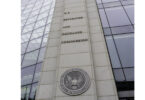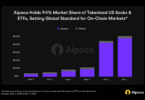The Commodity Futures Trading Commission (CFTC) has a Global Markets Advisory Committee (GMAC) made up of industry participants. Today the subcommittee on digital assets voted in favor (27-0) of three recommendations to adopt DLT and tokenized assets as collateral for margin. The proposals would need to be adopted by the full GMAC Committee and it’s up to the CFTC to decide whether it proceeds.
Stepping back, the CFTC is the primary regulator for derivatives markets. Typically derivatives require the posting of margin to cover the risk of price swings. Initial margin is provided at the outset, with variation margin during the lifetime of the derivative. Non cash collateral is already allowed by the CFTC but is not used much for variation margin, because moving assets involves multiple intermediaries and hence delays. Plus, assets can only be transferred during office opening hours.
Article continues …

Want the full story? Pro subscribers get complete articles, exclusive industry analysis, and early access to legislative updates that keep you ahead of the competition. Join the professionals who are choosing deeper insights over surface level news.






